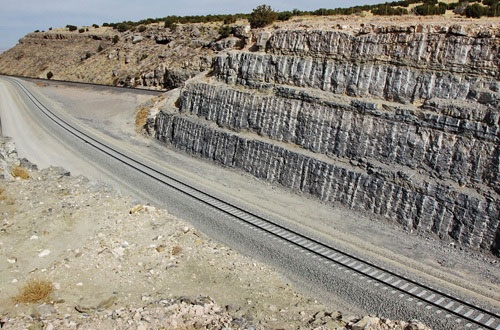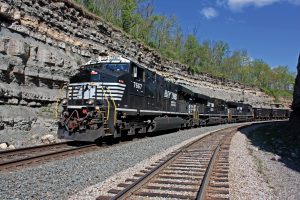K-State study to look at freeze/thaw of concrete ties in HSR applications
Written by Jenifer Nunez, assistant editor
A Kansas State University-led research project is helping high-speed rail systems handle the stress of freezing and thawing weather conditions.
The university’s Kyle Riding, assistant professor of civil engineering, is leading a three-year study that looks at the freeze-thaw durability of concrete railroad ties. The research will help to develop safe and durable high-speed rail systems.
Riding is collaborating with Mohammed Albahttiti, civil engineering doctoral candidate from the United Arab Emirates, the university’s Institute of Environmental Research, as well as a colleague at the University of Illinois at Urbana-Champaign and commercial partners Canadian National and CXT Concrete Ties Inc. The Federal Railroad Association recently awarded Riding more than $1.2 million to study the materials and fabrication process and to develop quality control tests that ensure safe freeze-thaw durable concrete railroad ties.
When water freezes it grows in size by roughly nine percent, Riding said. These increases, coupled with the decreases when the ice melts, cause stress on the container the ice forms in. When too much stress occurs the container can break, similar to what happens when a full soda bottle is left in the freezer.
In concrete ties, water collects and freezes in the pores of the concrete. As the liquid freezes, it creates stress in the railroad tie, which can crack the ties. High-speed rail systems are more sensitive to these problems because of the high speed at which the trains travel on the tracks.
To study the freeze-thaw conditions in concrete ties, researchers will add surfactants to the concrete as it is being mixed in the laboratory. These compounds produce millions of microscopic bubbles in the concrete that act as pressure release valves to help protect the concrete against damage.
Researchers will evaluate the vibration conditions and air voids created by the bubbles in rail ties produced from various other materials, including surrogate clear materials, cement paste and mortars before scaling up to concrete. The ties will also be studied to determine if they get wet enough on the tracks to cause damage.
Additionally, the team is developing evaluation methods that will help tie manufacturers determine the freeze-thaw resistance of concrete ties once they are produced.





